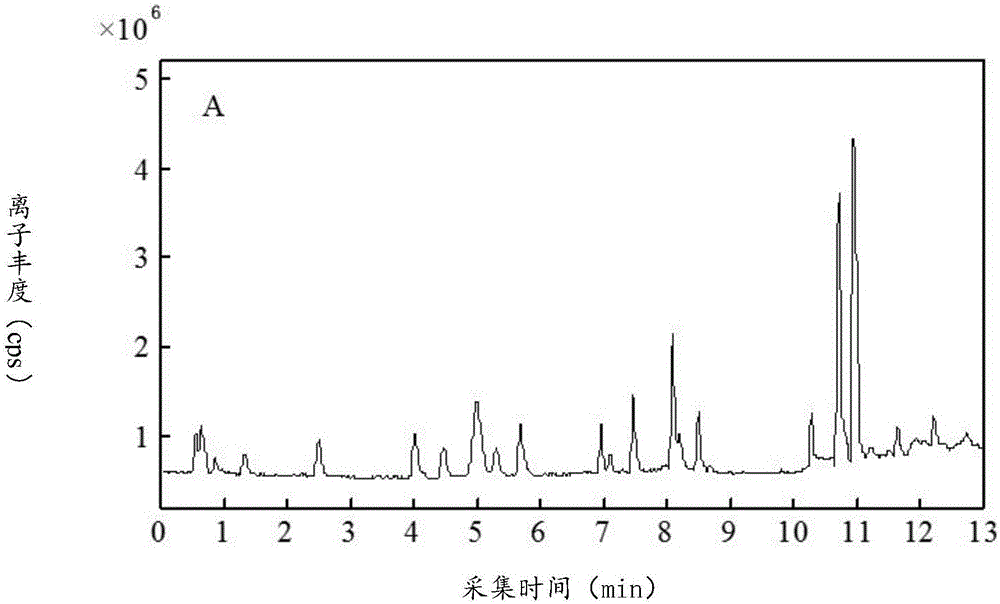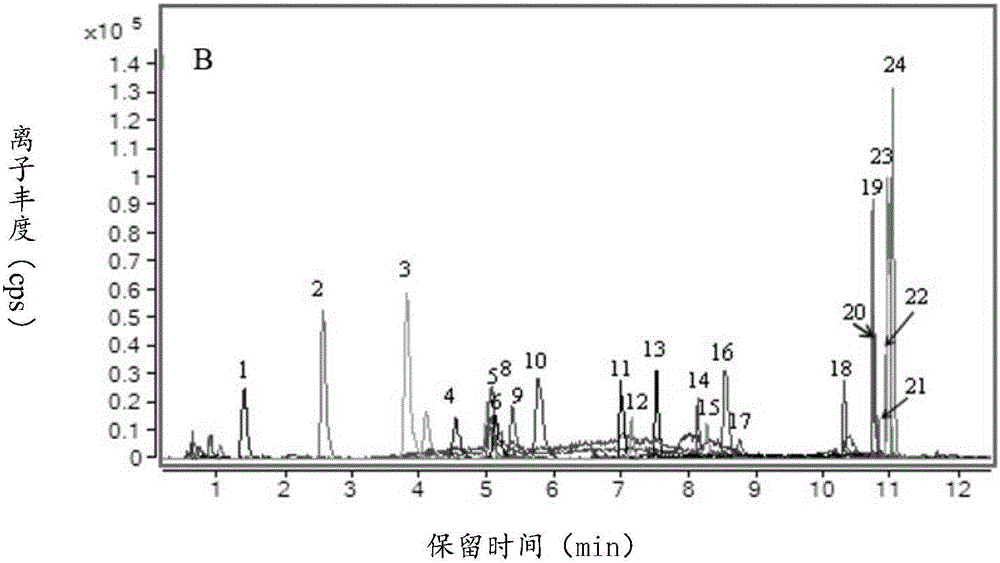Qualitative method of phenolic compounds in tea seeds
A qualitative method and compound technology, applied in the field of qualitative research of phenolic compounds, to achieve the effect of good peak shape, improved specificity and accuracy, and good response
- Summary
- Abstract
- Description
- Claims
- Application Information
AI Technical Summary
Problems solved by technology
Method used
Image
Examples
Embodiment 1
[0057] Embodiment 1: A kind of qualitative method of tea seed phenolic compound
[0058] Materials and Reagents:
[0059] Tea seeds are collected from Anxi tea garden in Quanzhou City, Fujian Province.
[0060] Acetonitrile, methanol, formic acid (all chromatographically pure): American Sigma-Aldrich Company; n-hexane (chromatographically pure): Xilong Chemical Co., Ltd.; experimental water is self-made ultrapure water; Catechin, gallic acid monohydrate, phthalic acid, 4-hydroxyphenylacetic acid, vanillic acid, cinnamic acid, p-coumaric acid, caffeic acid, ferulic acid, sinapic acid, chlorogenic acid, epicatechin, Apigenin, Kaempferol, Luteolin, Quercetin, Myricetin, Naringenin (all analytical grade standards): Aladdin Reagent Company; Catechin, Epigallocatechin, Epigallocatechin Gallatin Ester (all analytical grade standard): Sigma Company, USA; 0.2 μm organic filter membrane: Whatman Company, UK. Instruments and equipment:
[0061] Agilent 1290 series ultra-high performa...
Embodiment 2
[0082] Embodiment 2: Verification test
[0083] In order to verify the qualitative effect of tea seed phenolic compounds provided by the present invention, the retention time and secondary mass spectrum of the preliminarily identified compounds were further compared with the standards. Under the same chromatographic mass spectrometry conditions as in Example 1, the total ion current chromatogram of the mixed standard substance was obtained, and after accurate mass extraction, the accurate mass extraction chromatogram was obtained ( Figure 10 ). Depend on Figure 10 It can be seen that there are 24 phenolic compounds in tea seeds, and the retention time of the identified phenolic compounds in tea seeds is compared with that of the standard, as shown in Table 1, the difference in the retention time of all 24 identified compounds and the corresponding standard is within Within ±0.1min. At the same time, the deviations between the secondary fragment ions actually collected in ...
PUM
 Login to View More
Login to View More Abstract
Description
Claims
Application Information
 Login to View More
Login to View More - R&D
- Intellectual Property
- Life Sciences
- Materials
- Tech Scout
- Unparalleled Data Quality
- Higher Quality Content
- 60% Fewer Hallucinations
Browse by: Latest US Patents, China's latest patents, Technical Efficacy Thesaurus, Application Domain, Technology Topic, Popular Technical Reports.
© 2025 PatSnap. All rights reserved.Legal|Privacy policy|Modern Slavery Act Transparency Statement|Sitemap|About US| Contact US: help@patsnap.com



